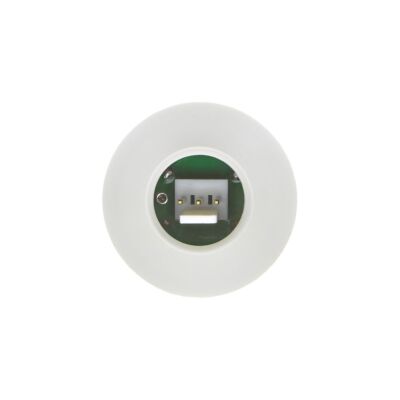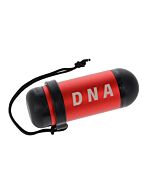R-22 Compatible Oxygen Sensor
- R-22 Compatible Oxygen sensor with 3-pin Molex connection
- Accuracy within +/- 2% of full scale
- Response time is 6 seconds
- Dated test results included with each sensor
R-22 Compatible Oxygen Sensor
- Buy 3 for $43.00 each and save 4%
- Buy 4 for $41.00 each and save 9%
- Buy 5 for $39.00 each and save 13%
This R-22 compatible oxygen sensor was manufactured in April 2025 by Analytical Industries, with a one year warranty from date of purchase and estimated life for use in diving gas analyzers of approximately 36 months.
The Analytical Industries (AI) PSR-11-39-MD, with a 3-pin Molex connector is an R-22D type sensor; compatible with the Maxtec MAX-305F sensor, NRC D-05 sensor.
The sensor is suitable for use with the Cochran Lifeguard, Apeks DSX analyzer accessory, Divesoft DNA, DiveTek O2, DiveNav cootwo, Mares EANx, and OxySpy breathing gas analyzers. This sensor was manufactured in April 2025 by Analytical Industries, with a one year warranty from date of purchase, shelf life of 12 months and estimated life for use in diving gas analyzers of approximately 36 months. However because of the manufacturing date is outside the 4 month shelf life window recommended for rebreather applications, it is not suitable for use in rebreather applications beyond August 2026.
Features
- Accuracy within +/- 2% of full scale
- Response time is 6 seconds
- Conformal coating
- Temperature compensated
- Hydrophobic membrane
AI brand diving sensors ship with the documentation of a final pressure test for each sensor. The sensor is tested at approximately one ATA in air and 100% oxygen, then tested again at 1.8 ATA in oxygen, and the millivolt readings are recorded for all measurements. The results document that the cell is within specifications for current and linearity up to a PO2 exceeding 1.6 ATA. The dated test results are included in the package with each individual sensor.
| Brand | Analytical Industries |
|---|---|
| SKU | BA-PSR-11-39-MD |
| Weight | 0.250000 |
Customer Reviews
The R-22 and R-17 type oxygen sensors in diving
Teledyne Analytical, a early pioneer in the development of galvanic oxygen sensors, manufactures a variety of sensors for different applications. The R-22 models are all characterized by the same physical dimensions and 3-pin Molex connector; the R-17 models are similar but with an 3.5 mm mini-jack connector. They output approximately 10 mV in ordinary air at one atmosphere (i.e. 0.21 ATA partial pressure of oxygen) and room temperature with an average lifespan of about 36 months. In elevated oxygen pressures the mV output is much higher and the lifespan is much shorter. The various models differ internally in order to support specific applications such as automotive (R-22A/R-17A), medical (R-22MED/R-17MED), and gas analyzers (R-22S/R-17S). Early versions of modern rebreather designs incorporating oxygen sensors used those models (because it was what was available), but the sensors are sensitive to the high levels of humidity found in rebreather loops. Teledyne later offered "D" versions for the diving market (R-22D/R-17D) that improved their resistance to moisture.
In the 2000's, Teledyne Analytical had to defend the sensors in several (frivolous?) lawsuits associated with rebreather fatalities. Although the sensors were never found to be at fault, Teledyne ceased manufacture of the diving grade models because the litigation costs to defend the sensors exceeded the value of the very small rebreather sensor market at the time. Several other competing manufacturers began to offer plug-compatible replacements for the now discontinued R-22D/R-17D models. Over time those other manufacturers have made significant improvements to the original design, although the physical and connector specifications have remained the same. They are often still generically referred to as "22D type compatible" or "17D type compatible" after the original Teledyne model number, although Teledyne has not resumed branded production of diving grade sensors.
The primary difference between the "S" type sensor and the "D" type sensor is the presence of a hydrophobic membrane on the face of the diving grade sensor. The membrane improves resistance to moisture, but slows the response of the sensor to changes in oxygen partial pressures by several seconds. In practice, for use in diving gas analyzer applications the slightly slower response time of diving grade sensors is little consequence with the benefit being the design is more resistant to moisture found on the face of tank valves. If the diver or fill station operator fails to wipe or blow away any moisture present on the valve outlet, that moisture can enter the stream of gas being analyzed and affect the accuracy of the analysis. Some prefer to use the D type sensors even in analyzers because of their resistance to moisture, others prefer the S type sensors for their slightly faster response time in analyzers - especially in frequent use applications. Both types will work in gas analyzers but the S type must never be used in rebreathers.




